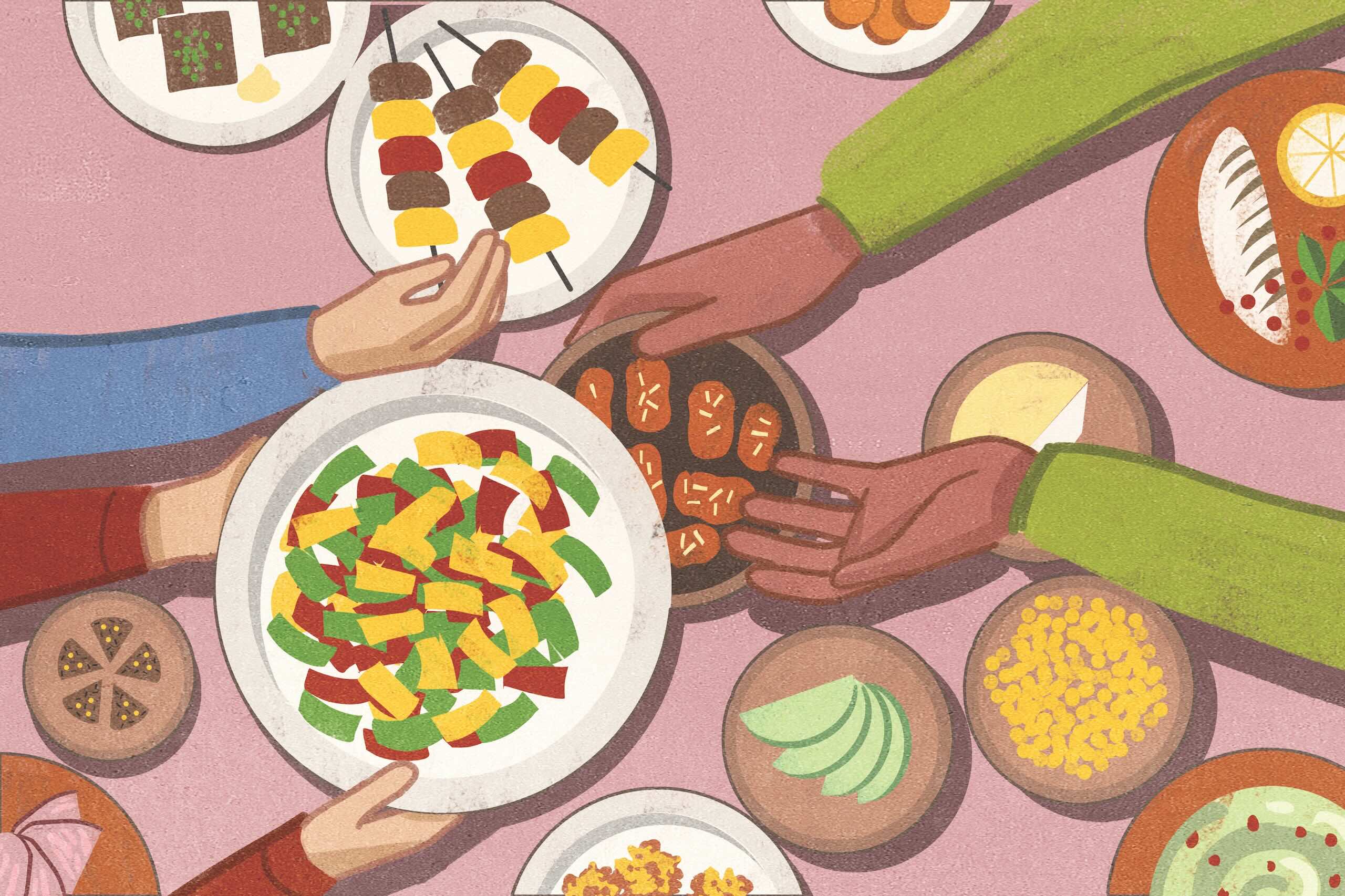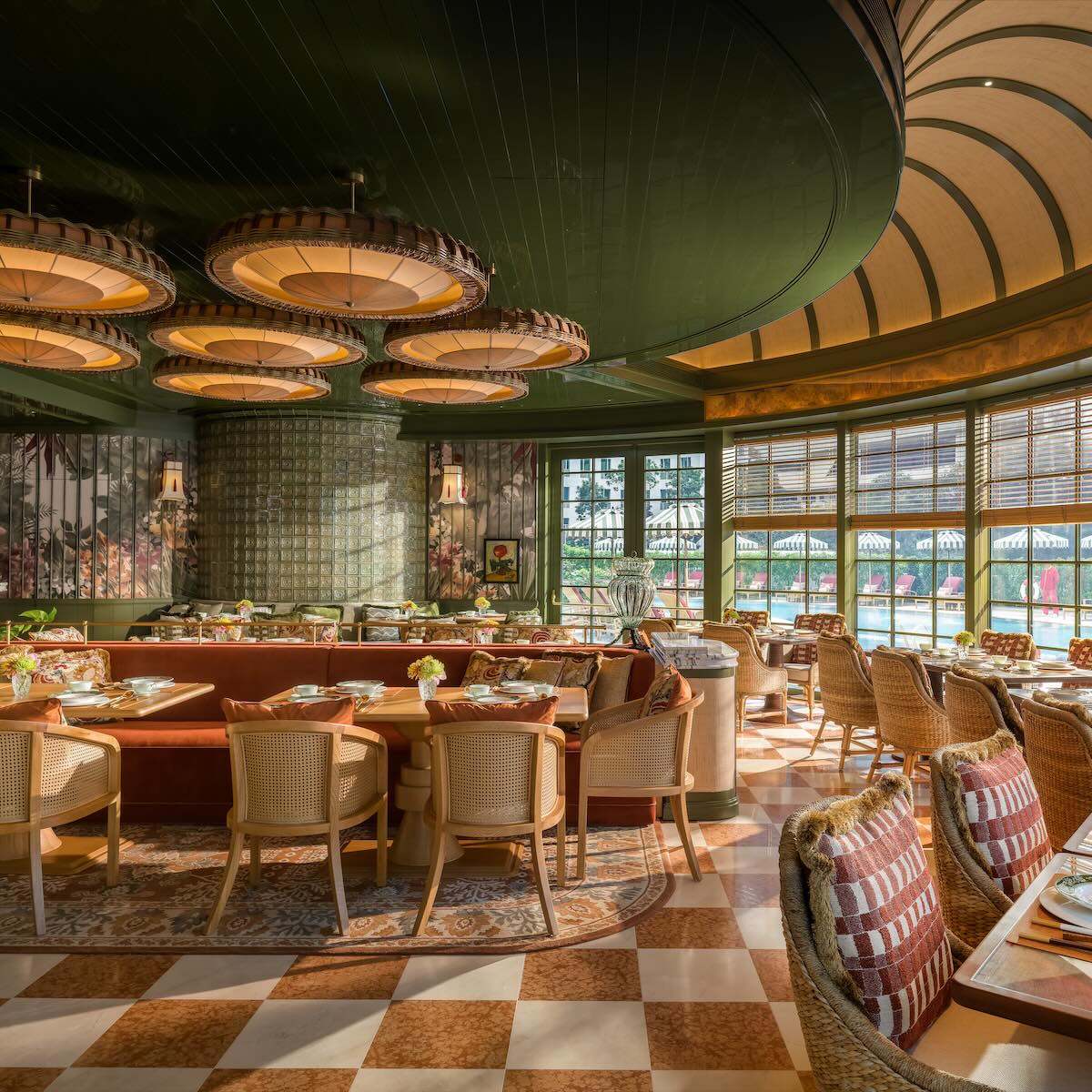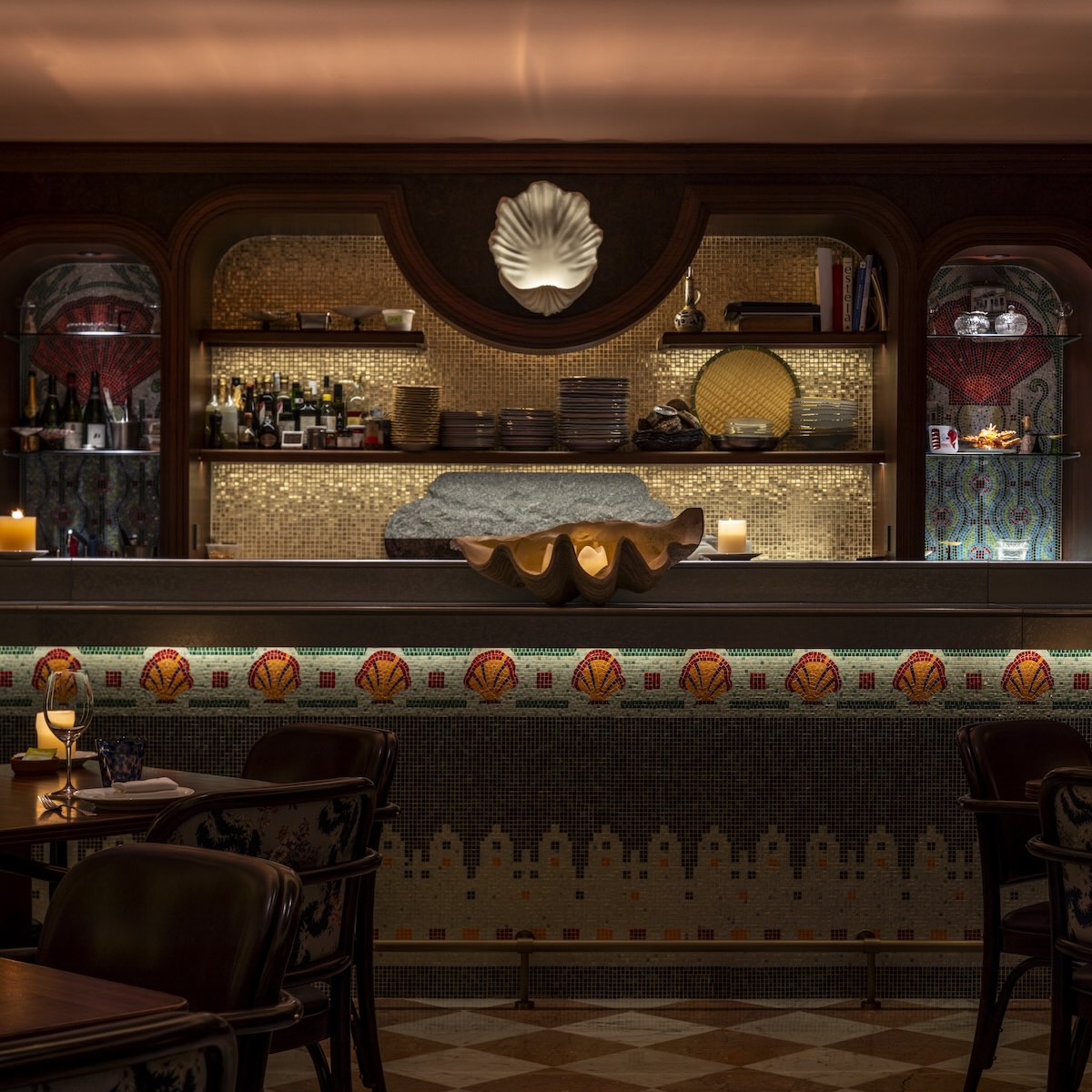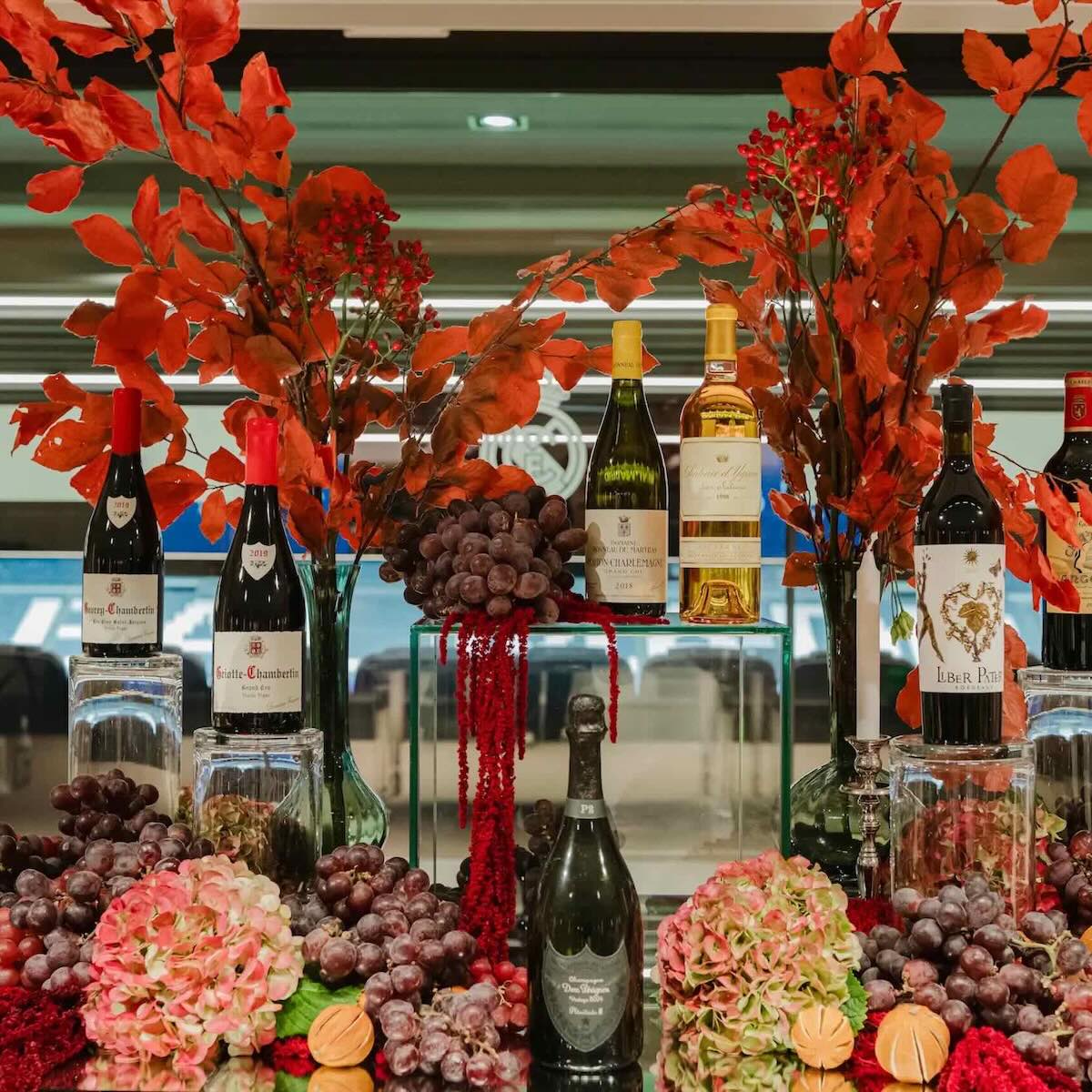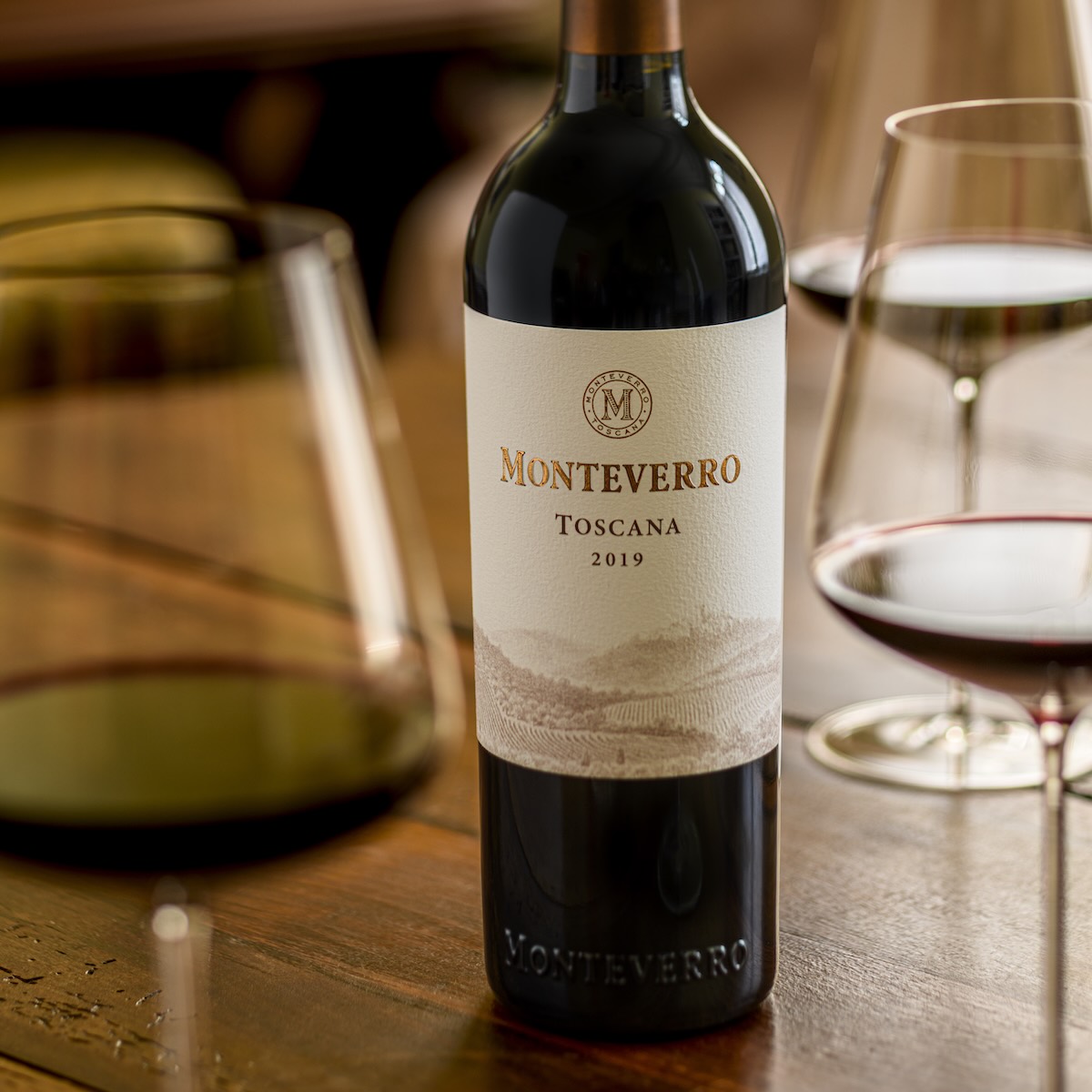Hands Down
Of all the countless dining trends that have come and gone—and Hong Kong
is a terrific place to encounter blink- and-you’ll-miss-it culinary crazes—one thing that stands the test of time is togetherness. Meals, in and of themselves, are shared experiences rooted in tradition, a quintessential coming-together over the communal breaking of bread. But it’s not only diners who find reason to gather—chefs, too, seek each other out, often crossing great distances to do so, all in the name of discovering new flavours, learning techniques, gaining experience, and building relationships. Four-hands dinners, already a well-known concept to local gastronomes, have made a remarkable comeback in popularity.
It’s the year of crossovers and collaborations, and the sheer volume of one-off menus that Hong Kong restaurants have served up in the past 12 months is staggering. As this familiar vehicle of driving synergy between restaurants
and chefs evolves, we now encounter once-in-a-lifetime culinary experiences prepared by a growing number of skilled appendages and renowned personalities. If two or even three pairs of paws are not enough to impress the battle-hardened gourmand, consider the sensational 14-hands charity dinner hosted at the now- shuttered Écriture—Maxime Gilbert and Yannick Alléno rustled up a band of friends from their shared time at Le Meurice close to two decades ago, gathering a combined total of 24 Michelin stars under one roof.
Forget the adage “too many cooks in the kitchen”—more and more restaurants are showing us that two brains are better than one. Niras, opened by Thitid “Ton” Tassanakajohn of Bangkok’s award-winning Le Du, is helmed by his choice of two head chefs, working in tandem. Many Cantonese fine-dining establishments are old hands at this game, dividing dim sum and then some between two culinary masters. Racines, one of our best restaurants this year, operates similarly, sharing responsibilities and equal standing at the top of the kitchen hierarchy. Richard Ekkebus honoured the Landmark Mandarin Oriental’s recent birthday with a gathering of Amber alumni, who returned to their old stomping grounds to cook once more with their former mentor. “We have been doing four-hands [dinners] and crossover collaborations for over 18 years and have an impressive wall of fame to make the point,” the veteran chef tells Robb Report Hong Kong, “[but] these events needed to become more meaningful […] in the spirit of something bigger. I wanted to show that a restaurant should be measured by the amount of talent they have nurtured.”
Ekkebus is not alone in celebrating his restaurant’s achievements through fellowship and reunions; the eateries of Rosewood Hong Kong planned their fourth-anniversary festivities around eclectic culinary collaborations. It was a rare chance to see vastly different cuisines come together in unheard-of ways—Chaat’s Manav Tuli joined hands with Mora’s Vicky Lau to give soy-based foods a Chinese-French and Indian spin. Masala-spiced udon and tandoori octopus marinated in fermented tofu, anyone? Post-pandemic, Ekkebus says, “everyone went frantically ahead organising events with chefs that they look up to or dreamed of working with— the craving for this is real.”
If there’s one thing we’re convinced will never go out of fashion, it’s whatever is available for a limited time, in limited quantities. And what could be more coveted than a one-night-only gastronomic experience that you’ll remember forever?
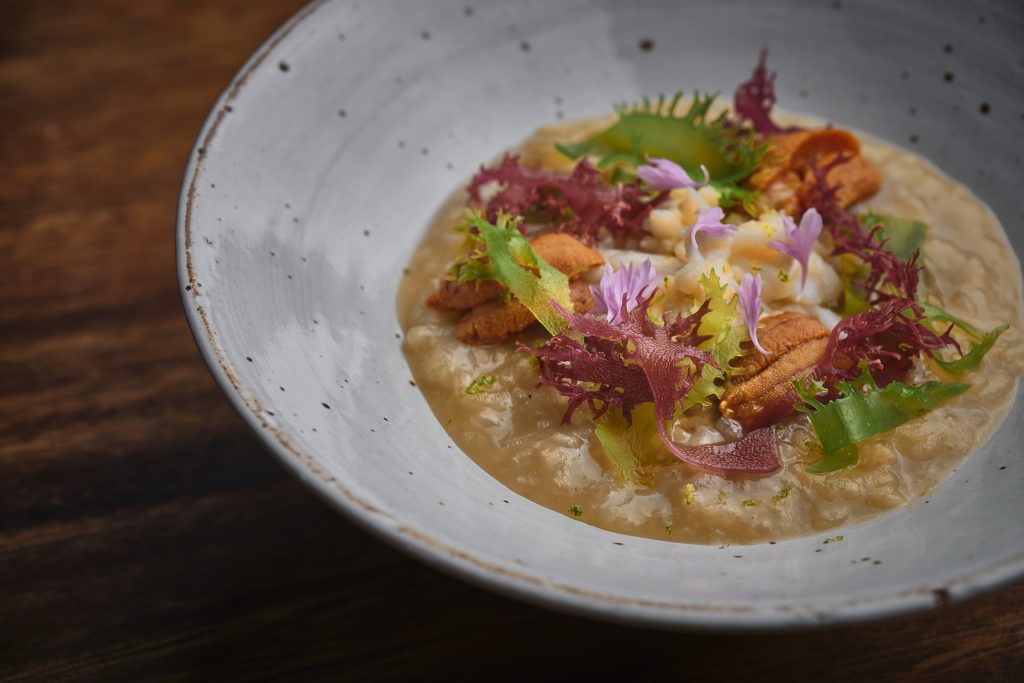
Contemporary
Cultivate
Leonard Cheung is a man who never stops. He also doesn’t take no for an answer. Both things have been crucial to his success; after all, how else do you talk your way into a kitchen job at a Michelin- starred restaurant at just 18 years old, with no professional experience? Albeit an unusual start, all that is ancient history now; Cheung has since proven his mettle through stints at 8 1/2 Otto e Mezzo Bombana and Eleven Madison Park, and his creative ambition and relentless pursuit of excellence have culminated in Cultivate.
Cheung’s debut, bold and self-assured, is in a league of its own. No ingredient is too strange, no flavour pairing too unholy—this young chef is known to combine caviar with banana bread, and he excels at complex creations that adroitly balance flavour, mouthfeel, aroma, and concept, taking inspiration from all corners of the world for his ever-evolving menu. Here’s someone who elevates the humble congee with Périgord truffle, seaweed, and sea urchin, and does it with impeccable panache.

Cantonese
Lai Ching Heen
Regent Hong Kong made its long-awaited return in 2023, and its flagship Cantonese restaurant reverted to its original name as part of the homecoming. Lai Ching Heen’s dynamic duo of almost three decades, Cheng Man-sang and Lau Yiu-fai, take the lead in creating the exquisite dishes that have kept the restaurant firmly cemented as a paragon of Hong Kong gastronomy, retaining its Michelin stars for the 14th consecutive year. Braised 28-head whole abalone in oyster jus, golden stuffed crab shell with crab meat, and wok-fried Wagyu with termite mushrooms served in a hot stone are just a few of many Lai Ching Heen signatures worth their salt, but the chefs’ highly esteemed culinary artistry shines brightest in the delicate preparation of the dim sum courses and the steamed lobster with tofu, egg white, and crab roe.
Chinese tea culture is as much at the heart of Lai Ching Heen as the food, with the restaurant’s tea sommelier on hand to recommend harmonious pairings—try the fragrant mandarin-zest pu’er, or the exclusive Longjing tea created between Regent Hong Kong and local teahouse Fook Ming Tong.
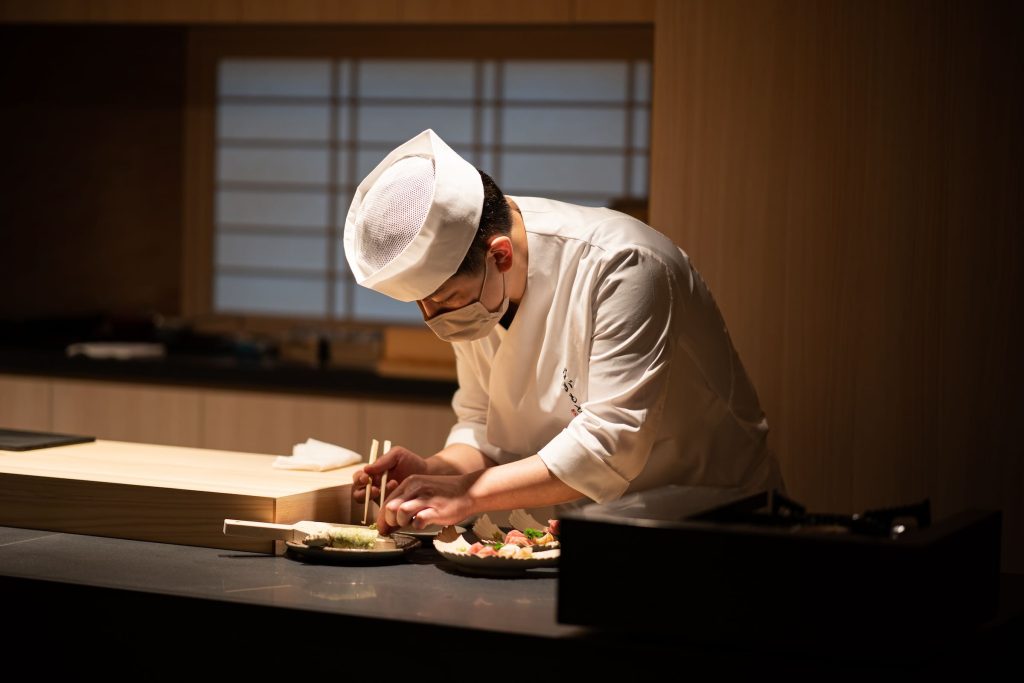
Japanese
Nagamoto
Nothing gets past Teruhiko Nagamoto, no matter how small. From the calligraphy on the restaurant signboard, the seasonal ikebana flower arrangement, to the hand-selected chopsticks for guests to use, the experienced chef imbues his creative vision into every nook and cranny of his eponymous kappō-style restaurant. Little wonder, then, that Nagamoto has chosen to lean on the shun culinary philosophy to shape a singular dining experience centred around the peak freshness of ingredients and their flavours. Driven by his selection of available produce, Nagamoto takes note of the minute changes in seasons to design his monthly menus, reinterpreting traditional Japanese cuisine with an expert, experienced touch. Monkfish liver is slowly braised in bonito soup and served with kumquat and citrus-infused vinegar; the delicate notes of Hokkaido snow crab are gently bolstered by fragrant Yamagata rice and salmon roe.
Junzo Irikado, that celebrated designer of countless high-end Japanese restaurants, once again leaves his calling card on the interiors. Simple, elegant minimalism steers the atmosphere of the dining room. Natural-edged wood is bathed in a warm glow; the L-shaped counter fencing the open cooking station puts the chefs on stage to perform their impressive craft.
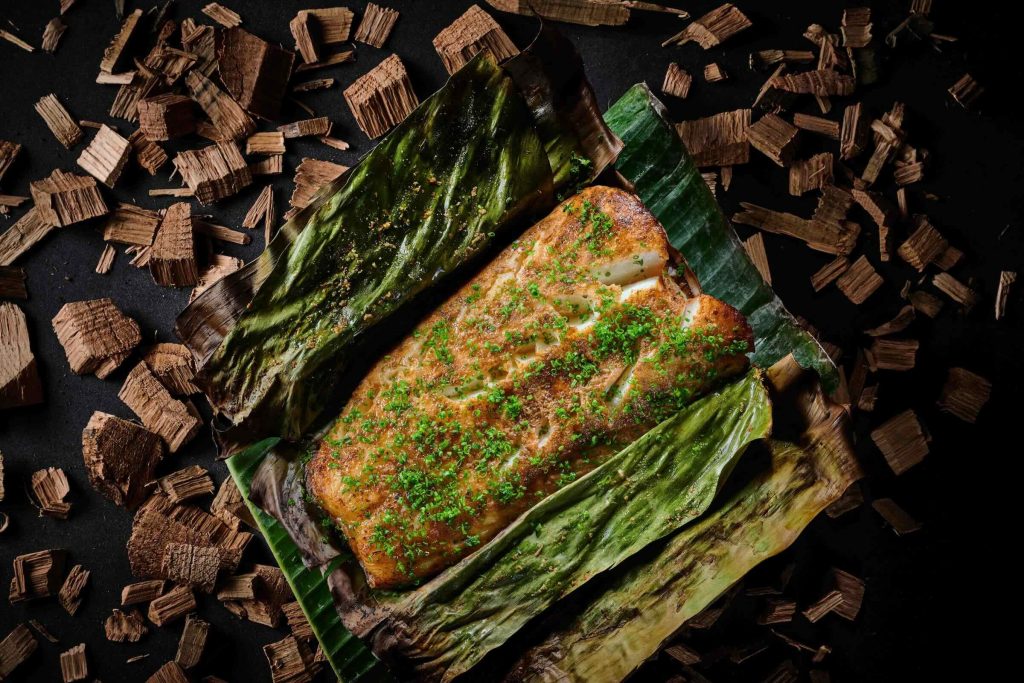
Vietnamese
Sếp
Wood-fired cooking is by no means an original thought; flames have long been the key to good food, and many upscale restaurants around the globe, from East, West, and everywhere in-between, have embraced the theatrical art of cooking with open fire as part of their culinary identity. But what is special about Sếp is combining live-fire cooking with Vietnamese fine cuisine.
DoBee Lam, executive chef, draws on seven years of experience and immersion in Vietnam to map the unique Sếp journey, inspired by the wood-fired cooking culture of ethnic hill tribes, the essential dishes of major Vietnamese cities, and the influence of French cuisine. His tasting menu repaves familiar ground with imagination and sophistication. Chicken papaya salad is elevated with local “three-yellow” chicken dry-rubbed with galangal and Kampot pepper; the iconic Chả cá Lã Vọng grilled fish is given the binchōtan treatment; Ibérico secreto pork shoulder is marinated in lemongrass and molasses, and smoked to mouthwatering effect. Don’t miss the phở bò on the lunch menu—we think it’s one of the best beef noodle soups in town.

Zero-Waste
Feuille
Nature is everything—and for David Toutain, of the same-named Paris restaurant, it’s the leading theme of Feuille (French for “leaf”). Under the tutelage of Marc Veyrat, the molecular gastronomy pioneer who famously incorporates mountain plants and herbs into haute cuisine, Toutain learnt to embrace every stage of vegetal growth to unlock the full potential of zero-waste, plant-based cuisine. Now, he has brought his culinary philosophy to Hong Kong. Executive chef Joris Rousseau is the man to plate up Toutain’s innovative vision.
Feuille’s seasonal tasting menu— vegetable-driven, not vegetarian— follows the life cycle of a plant, starting from “Grains & Seeds,” featuring the Frenchman’s much-praised cumin and sweet corn egg custard. On to “Leaves, Stems & Roots,” where leftover turbot bones are repurposed into a spread, and the entire beetroot, from earthy roots to shoots, is put to use in the pigeon course as gnocchi, consommé, millefeuille, and cream. “Flowers & Fruits” showcases sorbets and candies as desserts, and “Origins” summarises the entire journey in three mignardises. It all comes together under Rousseau’s deft touch; diners go on an intriguing romp through locally sourced ingredients, transformed, to discover the power of plants.

Italian
Noi
Paulo Airaudo, of San Sebastián’s Amelia fame, continues collecting Michelin stars like Pokémon. His latest, Noi, explores contemporary gastronomy through a global lens, driven by Italian influences, seasonal ingredients, and the pure flavours of excellent produce. Noi bills itself as neoteric Italian omakase—bold branding for a bold vision. Head chef Luigi Troiano, graduate of the accolade-heavy Geranium in Copenhagen, Maaemo in Oslo, and Frantzén in Stockholm, among others, composes the narrative to Airaudo’s concept, threading in his own unique flair.
Black abalone and roasted honey peas are fashioned into a crunchy tart inspired by the pancetta and peas atop pasta; the simple Italian tomato salad undergoes the royal treatment with Australian yellowtail kingfish, distilled tomato essence, and two types of seaweed; plump Scottish blue lobster is drizzled in ‘nduja and lemon oils for a whisper of southern Italy. It takes a receptive mind to see the nuanced connection between inspiration and dish, but the execution is technically accomplished, the flavours indelible; each dish tells a story.
Inside the AB Concept-designed space, the interiors are just as eccentric—lights in the shape of marine animals adorn the lounge ceiling and action figures are hidden in plain sight.

French
Racines
Intimate, wholesome, and nostalgic—the brainchild of long-time friends Adrien Castillo and Romain Dupeyre is a triumph of comfort dining with a refined twist. Integrating personal history and heritage is key to the restaurant’s characterful DNA—note the handcrafted steak knives, each engraved with the name of a person or place that holds special significance to the chefs; the rustic-chic interiors, inspired by the town of Èze, where the chefs first met, and the ancient borie dry-stone huts found in southern France; and the seasonal menus, designed around the chefs’ respective childhoods. Honouring the culinary traditions of le Midi, Castillo and Dupeyre connect to their racines—“roots”—in masterful, contemporary ways, reimagining dishes like the humble bouillabaisse (seafood soup) and Provençal caillette (traditional French meatballs) through unexpected flavour and ingredient pairings, and expert techniques gleaned from their time working in starred kitchens. Racines’s eclectic, East-meets-West fennel, kumquat, meringue, and sorbet dessert is a pleasant surprise, and a must, if you encounter it on the seasonal menu.
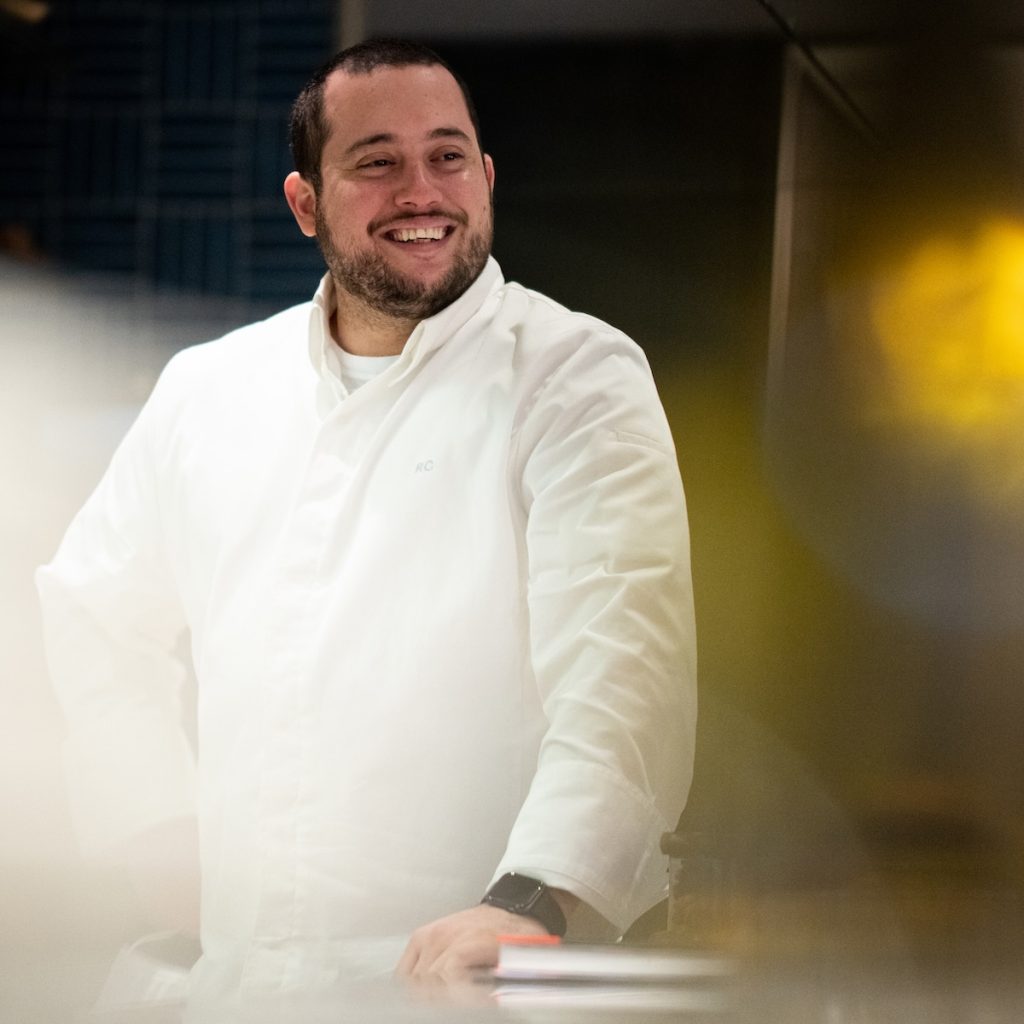
Latin American
Mono
Ricardo Chaneton has so firmly implanted his Latin American mark on Mono that we often forget the restaurant took its first steps as a French fine-dining concept. While the Venezuelan chef has kept the classical techniques, it’s the avant-garde exploration of LatAm’s manifold flavours and gastronomic traditions that really sets the experience apart.
One of his signatures uses fresh Ecuadorian cacao in novel ways, pairing fruit flesh and nibs with pan- seared langoustine in a rich seafood stock. Prickly pear cactus is married with seabass and a creamy curry, purple corn infladita tortillas are stuffed with Ebisu oyster and chayote squash, and Chaneton goes the extra mile with a jaw-dropping 21-ingredient mole.
His adventurous soul comes further to light with Mono Unplugged, as the host of frequent four-hands dinners. In 2023 alone, Mono welcomed Singapore’s Meta, Lima’s Mérito, and Rio de Janeiro’s Oteque to its kitchen to showcase the creative outcomes of global cuisines in collaboration, in a lively atmosphere fuelled by the jazzy tunes of vintage vinyl records.
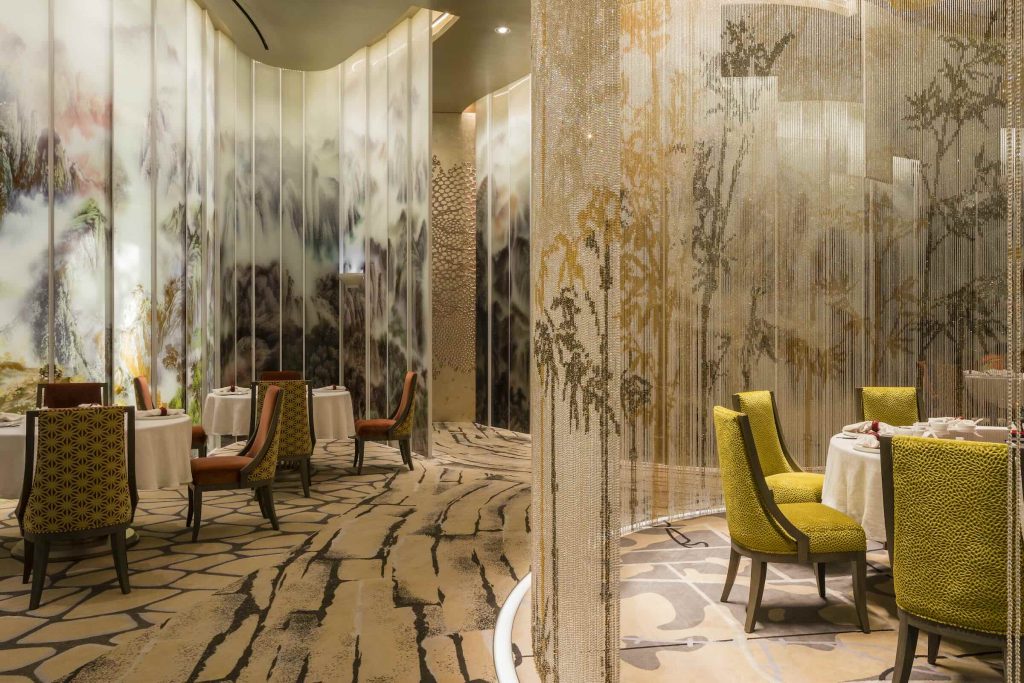
Sichuan
Five Foot Road
Yang Dengquan’s Five Foot Road is steeped in history, its name a nod to the merchant carts that once shuffled wares along the Southern Silk Road during
the Han dynasty, its interiors splendidly bedecked in ornate landscape paintings and traditional calligraphy, recalling the opulent mansion banquets and soirées of Chengdu high society in the 20th century. It’s a fitting backdrop for the veteran
chef who believes that his purpose is to preserve the recipes of his forefathers before they fade into obscurity; on this decorated pedestal is where Yang takes diners through the intricate 24 flavour profiles of his native cuisine.
He rises to the challenge with aplomb; the crispy mullet carpaccio with Sichuan peppercorn sauce—a reinvention that swaps beef for fish— and the difficult-to-perfect wok-fried glutinous rice with pork belly serve as palpable testaments to Yang’s fine technical skills. Yang elevates Sichuan dishes with practised adeptness, balancing the preservation of tradition with respect for culinary cornerstones—the poached Chinese cabbage in bouillon, a recipe from Qing imperial times, receives such reverential consideration.
No meal at Five Foot Road is complete without partaking in the tea experience; the restaurant showcases premium floral, green, black, and oolong specialities, prepared with glacier or Wuyi spring water by the in-house tea sommelier.

German
Heimat
Leave it to Peter Find, formerly of several Ritz-Carlton hotels in Asia, to turn preconceived notions of German cuisine on their heads. In honour of his origins, the idea of homeland—Heimat’s namesake—drives the Hesse native’s menu and creation process. Find tightens up the traditional Kohlrouladen stuffed cabbage rolls and Zwiebelrostbraten roasted beef with onions—staples of the German dinner table—for the fine-casual palate, and the Koenigsberger Klopse meatballs are reinterpreted with local Hong Kong Heritage Pork in a white gravy with capers. Save space for the whimsical gummy-bear trolley at the end of the
meal for a choose-your-own-adventure dessert. Heimat also keeps its plant-based patrons in mind with a vegetarian version of its tasting menu, skilfully substituting meat and seafood courses with roots and tubers. Consider it all an educational (and delicious) experience to observe the powerful potential of refined German gastronomy in the modern day.





